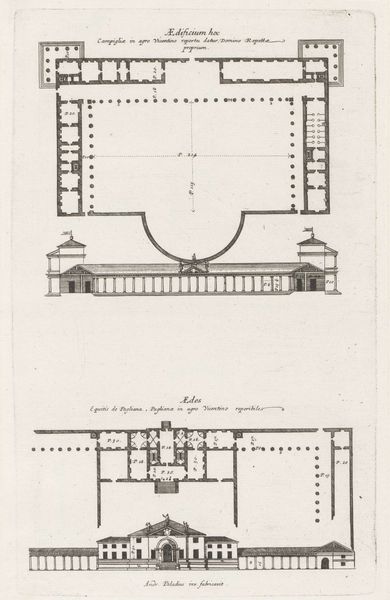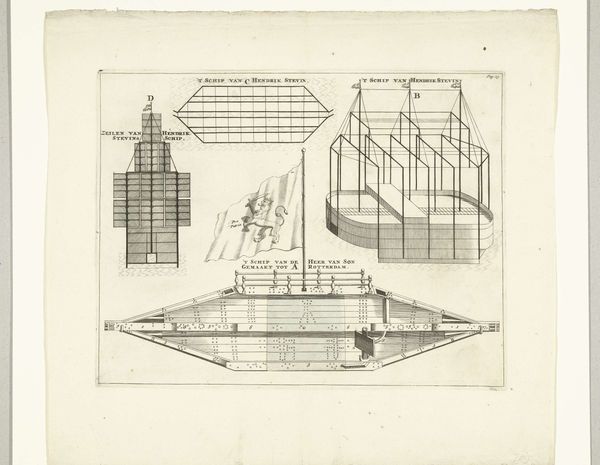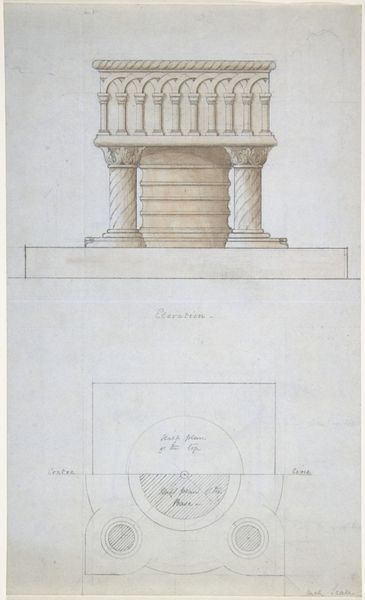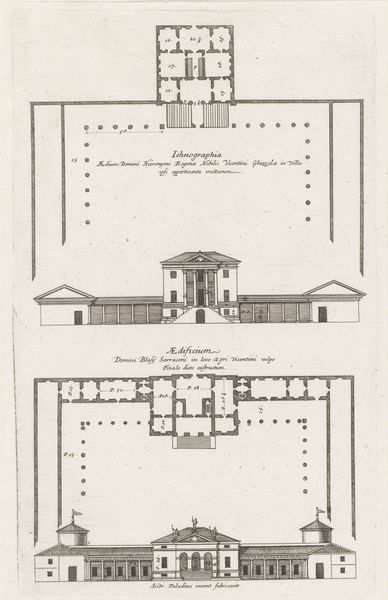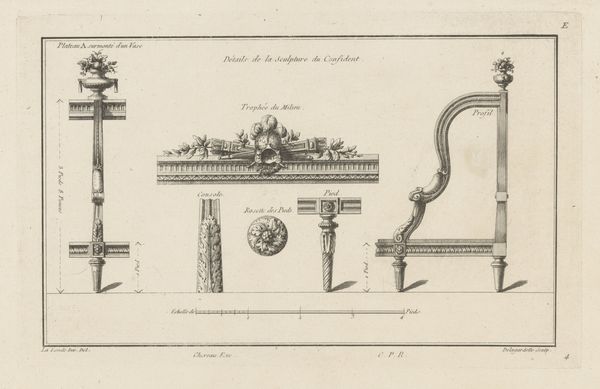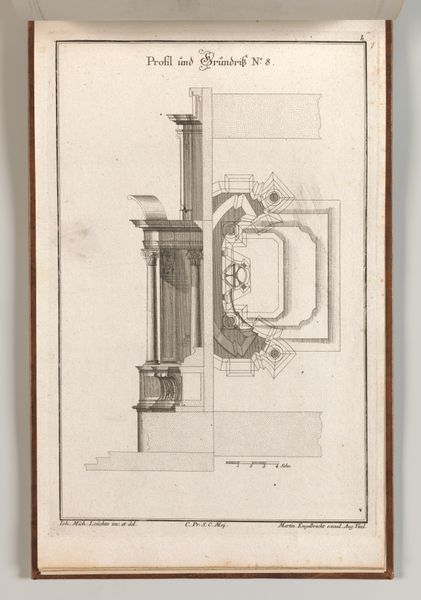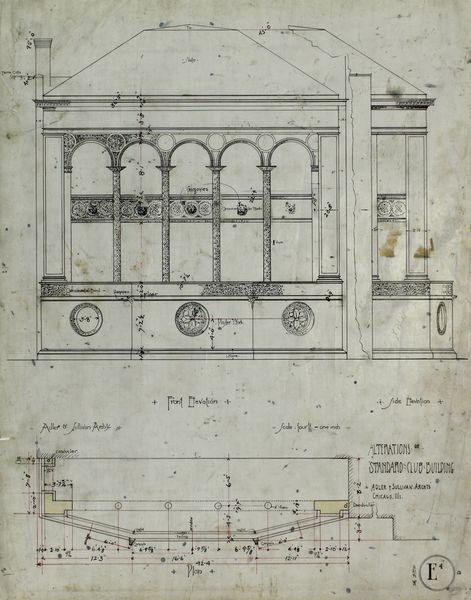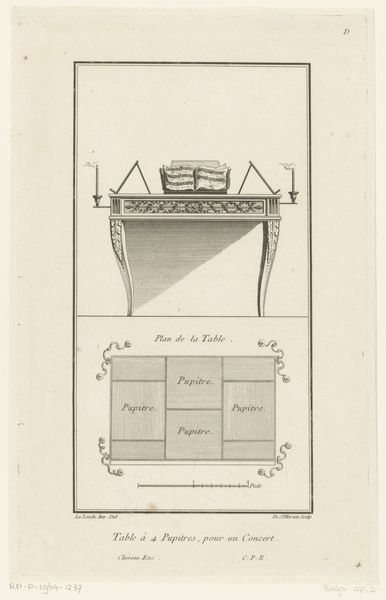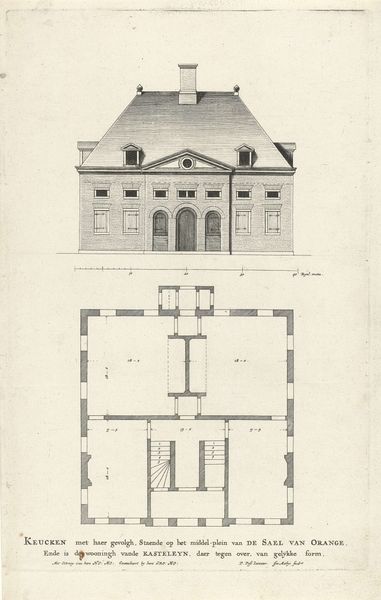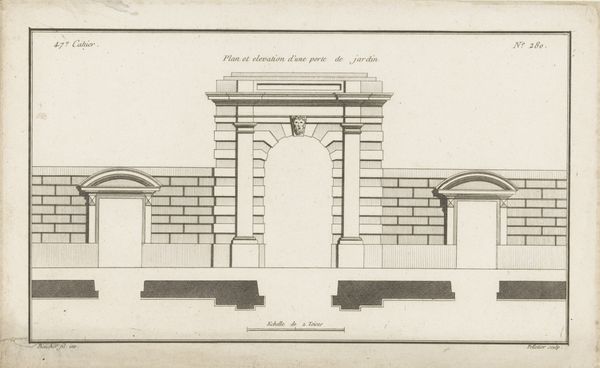
print, engraving, architecture
baroque
landscape
geometric
architectural drawing
cityscape
engraving
architecture
Dimensions: height 201 mm, width 196 mm
Copyright: Rijks Museum: Open Domain
Curator: This engraving by Jan Matthysz, dating back to 1655, offers a "Zijaanzicht van de poort en de toegangsbrug bij Paleis Huis ten Bosch"—or a side view of the gate and access bridge at Huis ten Bosch Palace. Editor: Immediately striking! It has an odd sort of calm, like looking at the blueprint of a dream. Curator: Indeed. Matthysz. provides us with a very precise depiction using detailed lines. The work allows us to explore the architectural planning in play at the palace during that era. We see both a frontal and plan view of the structures, giving it that dual quality of art and technical drawing. Editor: Exactly! The materials speak of social structure as much as of practical engineering. The palace gate visualized here involved resources—labor, materials, access—all concentrated to create these very controlled, defined points of entry. Consider who was kept out just as much as who entered. Curator: A sharp point. The meticulousness emphasizes control, power, and perhaps even a sense of Dutch baroque formalism. The gate becomes not just a functional object but also a declaration. I see something almost haunting in the pristine representation... Editor: But this isn't about lived-in beauty, right? It's about conceptual power. An architect or surveyor showing the vision to those who commissioned and financed it. The 'drawing' isn't just informative but part of the machinery of patronage. You almost feel like you're eavesdropping on a transaction, of power solidifying. Curator: You’ve shifted my perception slightly. Now I am considering the artist’s intended audience in a new light. Matthysz., through his deliberate strokes, immortalizes more than just a gate, but the power dynamic embedded in its creation. The bridge almost suggests an umbilical cord… a connection to the resources, to the very lifeblood of the Dutch Golden Age. Editor: Right, like looking not just at what was built but *how* and for whom. Material traces as a kind of historical poetry, hinting at far bigger and noisier things. Thanks for expanding the frame!
Comments
No comments
Be the first to comment and join the conversation on the ultimate creative platform.
